They Started on The Twilight Zone
published August 2003 in Jigsaw Magazine
by Andrew Ramage
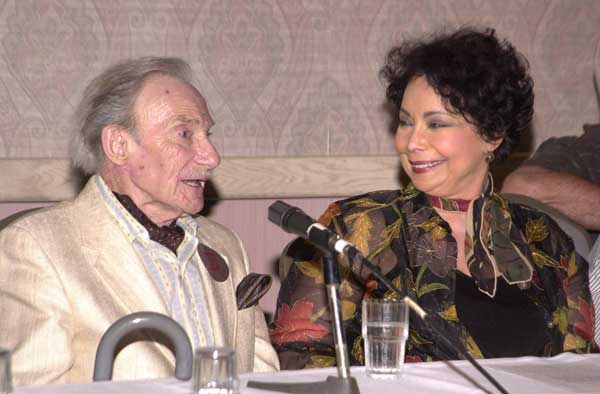


Before they took to the stars, they were residents of the middle ground, the land of shadow and substance known as The Twilight Zone. Before Irwin Allen created the illustrious stowaway Dr. Zachary Smith and the brilliant boy astronaut Will Robinson for Lost in Space and before Gene Roddenberry invented Captain Kirk and Dr. Spock for the fandemoniacal Star Trek, the actors who later played Dr. Smith, Will, Spock, and Kirk were busy at MGM Studios, cast in episodes of the TV series that many deem the greatest of all time. Over the course of 156 episodes which originally aired from 1959 to 1964, audiences saw the early beginnings of future megastars. For many, The Twilight Zone was the major launching pad of their career on the screen.
Those who grew up with the show easily recall the series' best twists-Burgess Meredith as a bookworm bank clerk who survives the H-bomb or Don Keefer getting turned into a jack-in-the-box by a little boy with mystic powers. Oscar Beregi leading a mission where four men travel a hundred years forward in time in attempt to collect off the worth of gold bullion acquired from a train heist. Some nine-foot-tall creatures who come to Earth as friendly ambassadors for the purpose of 'serving man' … which starts out as a campaign to end world problems but ends with the purpose of serving man up on a plate! Even the most forgettable of episodes of The Twilight Zone were far better than most series' best. They have withstood the test of time as classic black and white vignettes that have acquired their own distinguished patina.
The merry band of writers who conceived these wizard stories principally included creator Rod Serling, and sci-fi masters Richard Matheson and Charles Beaumont. They crafted remarkable tales, many of which they adapted for TV from previously published short stories written by themselves and others. In turn, they offered actors dynamite roles. Suzanne Lloyd, an actress who appeared in numerous episodes of early television including Twilight Zone says," The Twilight Zone was, in those days, one of the shows 'to get' because the writing and the production values were at such a high level.it was one of the greatest experiences of my life."
Few if any who have ever watched a single episode of the series will attest to the fact that The Twilight Zone (sans 'The' in its last two years of production) was anything less than a class act from start to finish. Despite the fact that its ratings never went through the roof, everyone loved it. It was different. It was fresh. It was innovative. But at the time, few of its guest-starring actors had any idea they were making history. It was just another job, a single 40-hour work week. Three days of rehearsal, one day of blocking with cameras, all in preparation for one day's shooting.
Contrary to the stereotype The Twilight Zone has attained over the years, it was not a sci-fi show. Serling: "It is a show about ordinary people who find themselves in extraordinary situations." Quality was always the prime objective. Producer Buck Houghton, who guided the first three seasons of the show, saw to it that The Twilight Zone remained grounded in its two characteristic themes: fantasy and the extraordinary. Thanks to a remarkable combination of forces, what emerged were some of the finest moments in television history. Houghton left the show at the end of its third year. In the fourth season, the show was expanded to an hour, produced by Herbert Hirschman and Bert Granet. Some have called this move a mistake, but it did result in several of the finest segments seen in the entire series. For the final year, the show was shortened back to 30 minutes and Granet left his post, succeeded by William Froug.
But it was the actors that ultimately brought the show its special quality, says writer George Clayton Johnson (Ocean's Eleven, Logan's Run), who wrote four Twilight Zone episodes plus stories for four more, "The writers...we were words on paper. The director laid the plans. The actors built the temple." He adds, "You never had to worry about inept actors lousing up your stories." True. The casting was magnificent. Only occasionally was a role miscast. Indeed, many of the best names the biz had to offer at that time were secured for the parts-Burgess Meredith, David Wayne, Joseph Schildkraut, Jeanette Nolan, Ross Martin, Keenan Wynn, Ida Lupino, Beverly Garland, Martin Balsam.
Some who got the parts had already done Rod Serling material in episodes of Playhouse 90 and some would go on to do Serling's later series' Night Gallery and The Loner. The surviving actors continue to claim recognition for the temple they built, lo these 40 years later.
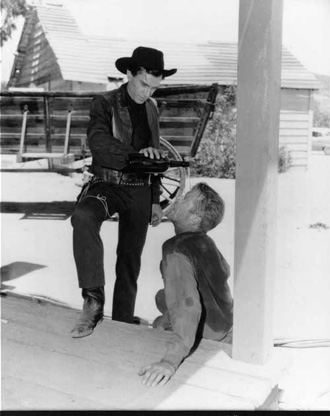
Some say The Twilight Zone paved the pathway for all similar shows that followed it, including Boris Karloff's Thriller and The Outer Limits, and to some extent, Star Trek. In fact, it would be unfair to say that The Twilight Zone was not a cousin to Alfred Hitchcock Presents, with which it shared three years of airtime. At any rate, the magic dust of these early shows rubbed off on many, including actor William Shatner.
He was new to Hollywood at the time, having done the feature film version of The Brothers Karamazov in 1958 as one of his first acting projects. Shatner still remembers the two episodes he did for The Twilight Zone , both written by Richard Matheson. In "Nick of Time," he was a superstitious member of a honeymoon team who reckon with the forces of a mystic seer in a diner in a small Ohio town. In the memorable fifth season episode "Nightmare at 20,000 Feet" (which was remade into a segment of the 1983 flick Twilight Zone: The Movie) he was Robert Wilson, a man flying home after six months in a sanitarium, having suffered a mental trauma on a previous flight. For over 50 years, Matheson has been regarded as a leading wielder of the horror pen, and "Nightmare" was undoubtedly one of his best efforts. Shatner gives a thoroughly convincing portrayal; his every subtle expression gives the impression that he is really and truly terrified of mental relapse. Apparently his acting talents got lost in the stars after he boarded the Starship Enterprise; Captain Kirk never gave him much opportunity to display his sizeable acting range. In between his two appearances on The Twilight Zone, he appeared in the 1961 Roger Corman film The Intruder, written by Charles Beaumont.
Fellow Trek stars Leonard Nimoy and George Takei also did "Zone" cameos. Nimoy appeared in a very small part as a soldier in Serling's "A Quality of Mercy," which starred Dean Stockwell, and Takei appeared in "The Encounter" with Neville Brand.
Piercing eyes and a violent expression have long been his trademarks, and Martin Landau used both to good effect on two drastically different Twilight Zone installments.
In the early first season episode "Mr. Denton on Doomsday" (a mini-western drama co-starring Dan Duryea and Jeanne Cooper), he played Hotaling, a desperado who insists on taunting former marksman-turned-drunkard Al Denton (Duryea). Hotaling always buys Denton a drink in exchange for three choruses of "How Dry I Am." Then one day, a traveling salesman named Henry J. Fate steps in and gives Denton a gun that aids in ending his domination over Denton. One of the last programs originally aired was a reality-based piece by Serling called "The Jeopardy Room," where Landau displays fire-burning intensity as Major Ivan Kuchenko, a Siberian defector en route to the Western world. A Commander named Vassiloff has been assigned to kill him. He visits Kuchenko's hotel room and sedates him with a glass of drugged wine. After he comes to, Kuchenko receives a message by tape recorder that a bomb has been planted in the room. If he finds and deactivates it within a period of three hours, he can go free. He doesn't quite deactivate it, but through a most ingenious plan of action, manages to escape.
Twelve-year-old Ann Jillian was the star of the somewhat controversial episode "Mute" in 1963, eons before she was a hit in "Sugar Babies" on Broadway with Mickey Rooney and received her Golden Globe for The Ann Jillian Story. In the hour-long Twilight Zone segment, she played Ilse Nielsen, a child who is part of an experiment. Her parents are one of a small group who sign a pact, agreeing to communicate with their children only telepathically. They raise her to believe that the world is not associated with words, but instead made up of objects with a particular function or meaning. When she is twelve years old, they die in a house fire, but Ilse escapes from the burning house and is taken in by the local sheriff and his wife. One problem - she has never attended school and still doesn't know how to talk. While trying to locate her family, they put her in school under the tutelage of a strict and frigid school marm named Miss Frank. Alongside Frank Overton and Barbara Baxley as Sheriff and Mrs. Wheeler, Ann Jillian does magnificently with a difficult role. Naturally, the script called for her to do all but the final scene using only facial expressions, coupled with her 'thought-voice' (voiceovers of what she is thinking). It's not hard to see why she continues to enjoy success both as an actress and motivational speaker.
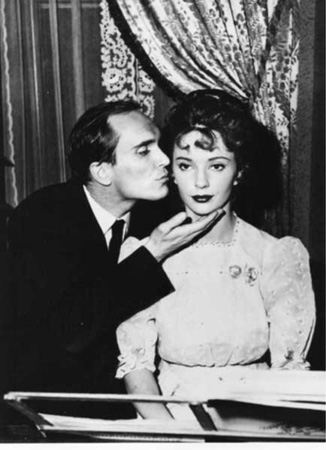
The humble Hollywood beginnings of Robert Duvall came with a non-speaking part in the unforgettable 1962 classic film To Kill a Mockingbird, as the hermit Boo Radley. One of his first roles on television was a touching hour-long episode "Miniature," written by Charles Beaumont. He is Charley Parkes, a shy, virginal, 30-something office worker who never quite fits in with the rest of the world. The only place he finds solace and refuge is a local museum, where he falls in love with a girl in a dollhouse and gets committed to a mental institution. Needless to say, the part was a far cry from Network, Lonesome Dove, Deep Impact, or virtually any other role that Duvall has lent himself to, and he does splendidly. Pert Kelton and Barbara Barrie (late of "Suddenly Susan") played his doting mother and sister. Emmy award-winning actor William Windom, whose career in TV and film has spanned over five decades, plays the psychiatrist who thinks he's cured Charley but actually didn't quite.
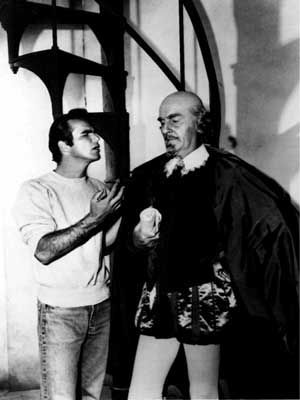
Those looking for a good laugh should check out Burt Reynolds' early work as Rocky Rhodes in "The Bard," where he does a marvelous and genuinely 'New Yaaawk' impression of a Brando-type temperamental TV star. The same episode stars Jack Weston-the John Candy of the Sixties-as an eccentric young writer insistent on breaking into writing for television, a subject Rod Serling knew all too much about. Columbo fans will be surprised at Peter Falk's portrayal of Castroesque figure Ramos Clemente in "The Mirror"-he had the cigar but hadn't yet gotten the tan-hued trenchcoat. Dennis Hopper is a corrupted young neo-Nazi set on changing the world in "He's Alive." Serling always loved Carol Burnett, at that time a regular on The Garry Moore Show. He wrote a story for her as a clumsy movie theater usherette in "Cavender is Coming," which proved that comedy was not his forte but it certainly was Burnett's. It's no surprise that the later-legendary comedienne got her own variety show that lasted for 11 years in prime-time on CBS. One of Don Rickles' very first TV appearances was in yet another comedy episode of Serling's, as a barfly in "Mr. Dingle the Strong," starring Burgess Meredith, in 1961.
They succumbed to the surreal frolics of TV's prime time in the mid-Sixties, but nearly the entire Bewitched company visited The Twilight Zone beforehand. Agnes Moorehead, by then long established as one of the great dramatic actresses of the twentieth century but three years pre-Endora, starred in Richard Matheson's horror story "The Invaders," where she played an old farmhouse hag who gets terrorized by astronauts from Earth. She holds the distinction of playing the only character in all of Twilight Zone with not a single word of dialogue. Elizabeth Montgomery may have become Endora's nose-twitching daughter who defected from the cauldron-stirring world of witches for a life as humdrum homemaker, but one of her favorite roles was the episode "Two" which co-starred the late Charles Bronson. Like Moorehead before her, she has a near-silent part as a Russian soldier who undergoes a battle of wills with an American soldier (Bronson). Dick York-Samantha's own loveable Darrin "Durwood" Stephens-also performed amicably in a pair of episodes-"The Purple Testament" and "A Penny for Your Thoughts." David White (Darrin's boss, Larry Tate) is also featured in "A World of Difference" alongside Howard Duff, and in "I Sing the Body Electric," the only Twilight Zone episode written by the legendary Ray Bradbury. And, to top things off, both Mrs. Kravitzes - Alice Pearce and Sandra Gould, made cameos in the episodes "Static" and "What's in the Box," respectively.
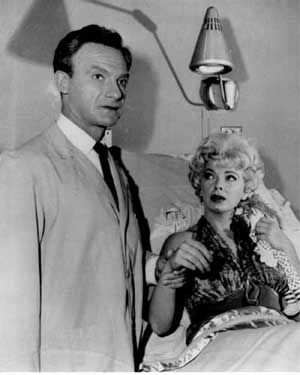
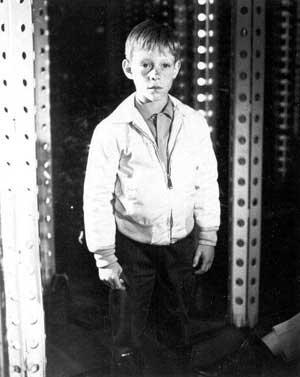
In 1965, Jonathan Harris and Bill Mumy boarded the Jupiter 2 for three years of being lost in space (no pun intended!), after appearing in a combined five installments of The Twilight Zone. Harris played a toffee-nosed doctor with heinous laugh in the episode "Twenty-Two" (starring Barbara Nichols), an experience he always treasured. He also appeared briefly in "The Silence" as Franchot Tone's lawyer. "It was so wonderful what Rod was doing for television," he related in one of his last interviews in 2002. Several years later, Harris would begin his creation of the illustrious and ever-frustrated Dr. Smith, servant to a robot whom he always barbed with side-splitting repartee. Six-year-old Bill Mumy would become a favorite of the casting directors on Twilight Zone and other staple shows of the day. His first appearance came in the second season episode "Long Distance Call," where he played a boy who communicates with his dead grandmother (Lili Darvas) on a toy telephone given to him just hours before she dies. In the fifth season, he teamed up with Jack Klugman, as father and son in Serling's touching tale "In Praise of Pip." But his most memorable work was done on the horrifying third season episode "It's a Good Life," where he plays a little boy who uses his mystic powers to obliterate people who think bad thoughts about him. Oscar and eight-time Emmyist Cloris Leachman played his placid and homely mother, some nine years before she breathed life into zany Phyllis Lindstrom on "The Mary Tyler Moore Show" and "Phyllis," and sickly Ruth Popper in The Last Picture Show. Mumy and Leachman reunited in 2003 for the latest Twilight Zone revival on UPN in a sequel episode "It's Still a Good Life," which also starred Mumy's daughter.
Cloris Leachman was not the only one from the Mary Tyler Moore crowd to pop in on The Twilight Zone.Ted Knight will forever be known for his unforgettable run as Ted Baxter, the malaproping anchorman of WJM-TV Minneapolis' Six O'Clock News. In 1959, he joined Jack Warden and Jean Marsh (Upstairs, Downstairs) and the Twilight Zone crew in Death Valley, where he played one of three lieutenants who travel to deliver supplies to Earth men serving jail sentences on asteroids. At the time, Knight was barely making the rent with sporadic acting jobs, and oddly enough he didn't even receive on-screen credit for his appearance! Harold Gould is best known as Martin Morgenstern, Rhoda and Brenda's beloved 'Pop', which he also played on Rhoda. After earning a PhD in theater, Gould taught drama at Cornell University for a number of years but preferred the stage over the lecture hall. One of his earliest TV roles came in 1963, a small part as a government official in "Probe 7-Over and Out" who communicates by satellite with Richard Basehart, who's stranded on a remote planet. The same year, he also appeared in Rod Serling's film The Yellow Canary with Barbara Eden and Pat Boone and had a major role in the 1973 classic feature The Sting. Irene Tedrow, who played Congresswoman Margaret Gettys on a number of "Moore Show" episodes, made two noteworthy appearances in Serling's "Walking Distance" and also "The Lateness of the Hour" with Inger Stevens and John Hoyt.
Time travel was a prominent theme on Twilight Zone, one Rod Serling later remarked that "we ran to death [on the show]." Russell Johnson, who spent three years stranded on Gilligan's Island as The Professor-a role that never really seemed to suit him-starred in two compelling time travel episodes by Rod Serling, "Execution" and "Back There." Coincidentally, in "Execution" he also played a professor. He brings an outlaw (Albert Salmi, in a superlative performance) 80 years into the future using a time machine. In "Back There," he plays an engineer named Peter Corrigan who's also a member of a MENSA-type club. He travels backward in time in attempt to stop the assassination of Lincoln after having a theoretical discussion with some elderly chums. While the assassination of Lincoln still happens, Corrigan does succeed in changing the future.
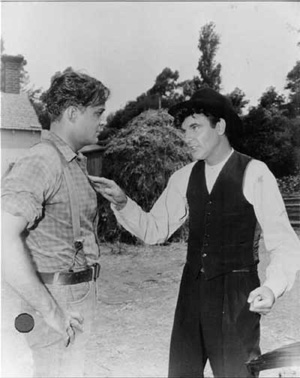
James Best remarked recently that he's going to go to his grave being remembered solely for Rosco P. Coltrane with the basset hound pooch! But before his seven-year stint on The Dukes of Hazzard, Best appeared in three Southern-style Twilight Zone episodes-"The Grave" (with Lee Marvin in one of his few TV appearances), "The Last Rites of Jeff Myrtlebank" (with Sherry Jackson) and "Jess Belle" (with pre-Honey West Anne Francis). Like William Shatner, his talents were completely unrealized in the rather hackneyed part as the dopey deputy of Hazzard County. Luckily, we have those few episodes to savor.
Although she had no way of knowing it at the time, a young actress named Donna Douglas was cast in would become probably the deepest-resonating Twilight Zone story, "Eye of the Beholder" by Rod Serling. This is the episode where a woman named Janet Tyler (actress Maxine Stuart under heavy wraps) is confined to a hospital after undergoing numerous attempts to restore her hideously deformed face. She nearly goes insane and insists that the bandages be removed. All the while, we never see the faces of the doctors and nurses who refer to her supposed ugliness. The last layer comes off, and reveals a beautiful woman (Douglas) … at least by our standards. The 'beautiful' people of her society are people with faces that resemble those of pigs. Janet Tyler is ultimately sent to a community of societal outcasts. Unfortunately, Donna Douglas will always be known as the demure girl who loved raccoons, Ellie May Clampett of The Beverly Hillbillies.
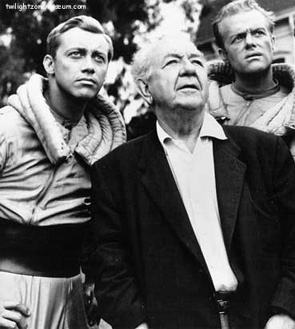
Kevin Hagen was horse-and-buggy Doc Baker of Little House on the Prairie's Walnut Grove, but he was already well-established as a versatile character actor by the time he took the part in 1974. Two of the roles that helped him get on the map were the Twilight Zone episodes "Elegy" and "You Drive." The latter story, effectively written by Earl Hamner, starred Edward Andrews (Sixteen Candles, Gremlins). Andrews plays a hit-and-run driver named Oliver Pope whose car comes alive, runs him down, and forces him to turn himself in. Meanwhile, he's having to fend off young Pete Radcliff (played by Hagen) whom he insists is trying to steal his job at the office and who later gets arrested for the crime Pope committed. In the early episode "Elegy," Hagen plays one of a group of geologists whose spaceship malfunctions and touches down on an asteroid, only to find everyone and everything motionless. Come to find out, the place is a futuristic cemetery where the dear-departed can achieve their unfulfilled life's ambitions. Only here can a homely woman win a beauty pageant.
The Twilight Zone today is bigger than ever. It stays alive in reruns around the globe, with websites, new books of the old scripts, and TV documentaries. In August 2002, the first-ever exclusively-Twilight Zone event was held in Hollywood, a two-day convention that featured an autograph show and panel discussions featuring writers, cast, and directors from the original series. Fanatics come home from work and pop in a DVD and catch an episode over dinner, then log on and check out the hundreds of Twilight Zone -related items listed for sale on eBay. Hundreds of actors who appeared in Twilight Zone can be found all over the dial, every hour of the day in reruns of old shows or appearances in new shows. The now-older actors are constantly popping up in new feature films and in stage productions in playhouses all over the world, skillfully imbibing the same style and flair that made them successful in the biz. They may have gone on to more memorable roles, but have never forgotten the series that played an important part in skyrocketing them into Rod Serling's great landscape beyond the stars.